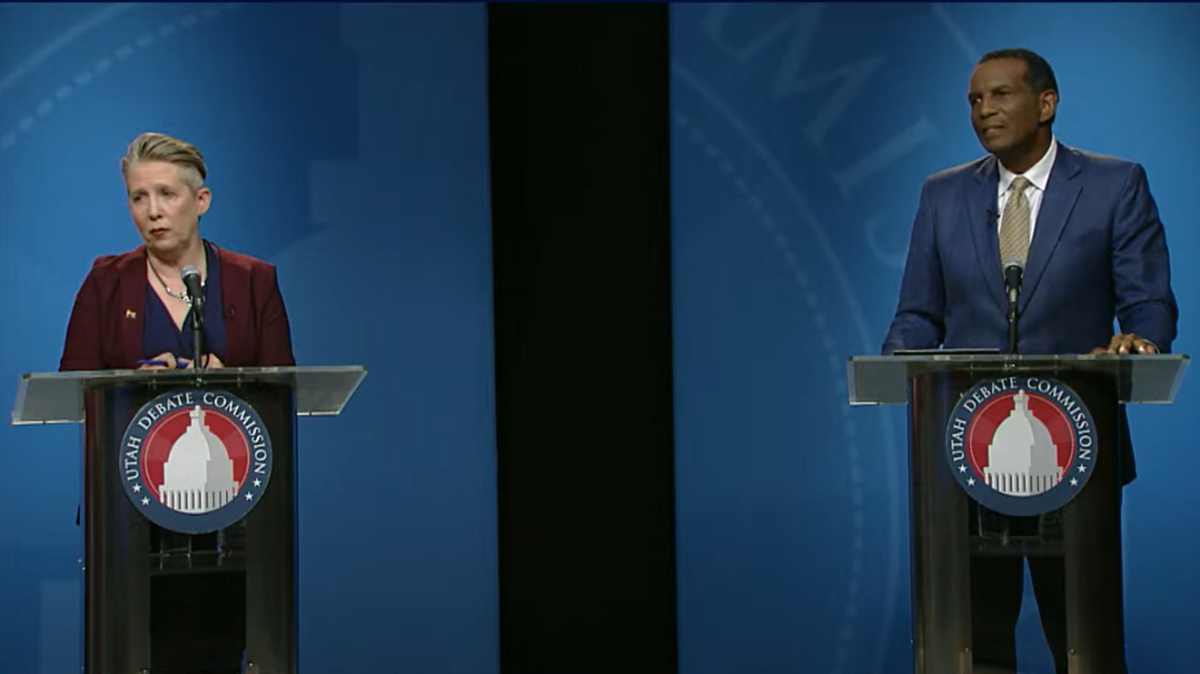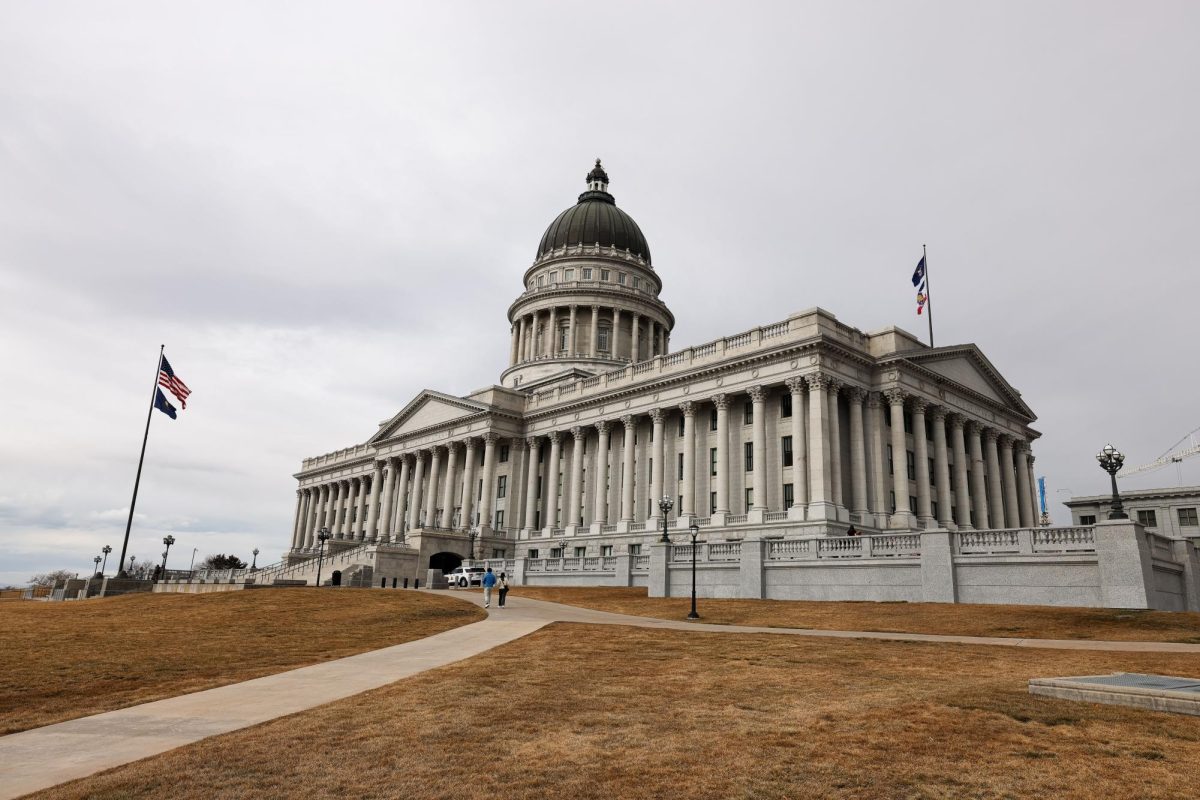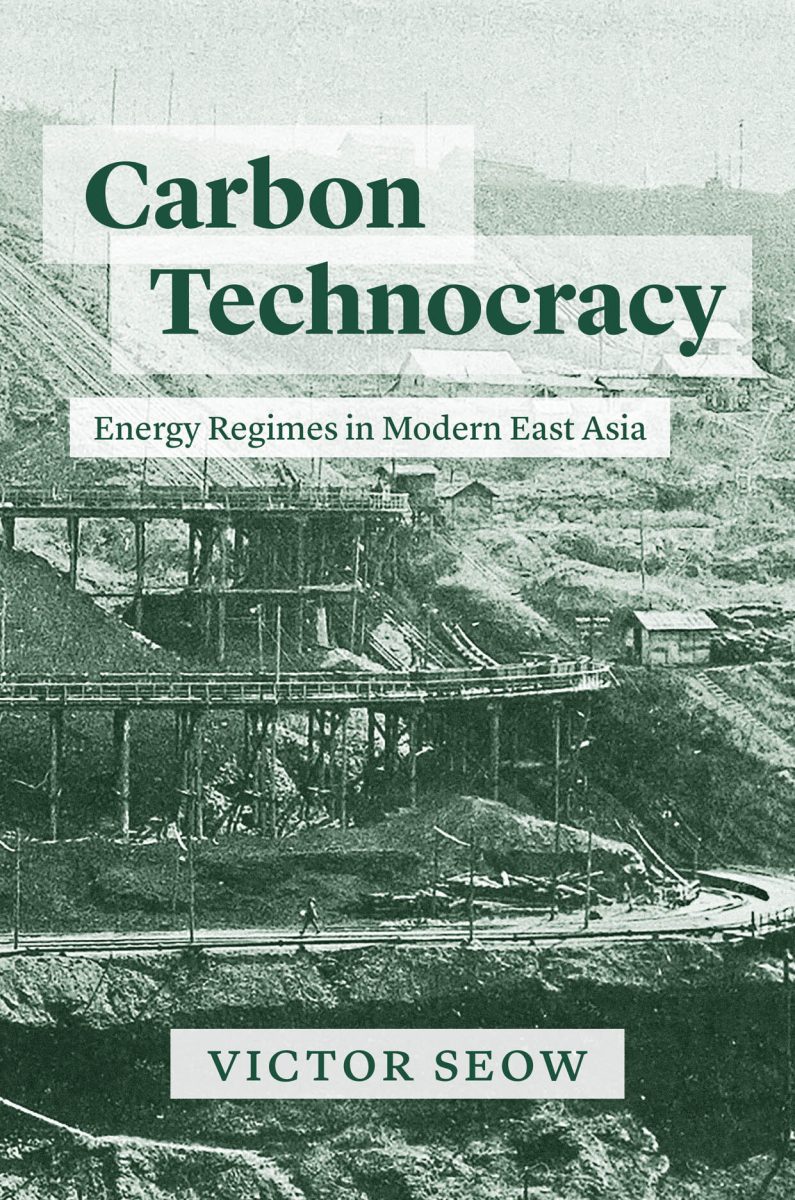Digital Library Exhibit Details History of Utah’s Air Quality
Inversion in Salt Lake City, UT on Nov. 10, 2017. (Photo by Curtis Lin | The Daily Utah Chronicle)
April 7, 2023
Most students of the University of Utah are aware that air quality is a persistent issue on the Wasatch Front, especially during winter when inversions are common. A new digital exhibit at the Marriott Library, however, illustrates how this issue has been woven throughout the state’s history.
The exhibit, “The History of Air Quality in Utah,” is a collaboration between Logan Mitchell, a professor of atmospheric sciences at the U, and Rachel Wittmann, a digital curation librarian at the Marriott Library.
“I was trying to figure out when people in Utah started caring about air quality,” Mitchell said about the genesis of the exhibit. “I stumbled upon the digital newspaper archive at the Marriott Library, and there are tons of old historical articles and they’re fantastic.”
He added that he initially became interested in the topic because air quality is such a prominent issue in Utah. A 2020 study found that air pollution costs Utah’s economy almost $2 billion annually and shortens the life expectancy of the average Utahn by about two years.
“With something that’s top of mind of everyone who lives here, it’s really important to know what our history is on that subject,” Mitchell said.
The air quality in Utah is uniquely terrible due to the topography of the region, which causes cold weather inversions, Mitchell explained.
“We have kind of special circumstances that make air quality challenges more acute,” Mitchell said.
Mitchell published an academic paper on the topic last summer, but felt that it wasn’t as wide-reaching as other mediums like a digital exhibit could be. Mitchell and Wittmann began to work on curating the exhibit in order to “really highlight more of the archival items and historical newspapers that are referenced in [Mitchell’s] article but not necessarily displayed,” Wittmann said.
Using these archival materials, they developed a timeline of Utah’s air history to examine the chronology and build a narrative around that, beginning in the 1850s and finishing in the present day, Wittmann said.
She explained the timeline details how the air quality in Utah deteriorated due to the use of “soft coal” to heat homes and buildings, which caused increased pollution and soot in the air.
“Walls had to be scrubbed, curtains washed and clothing became really dirty just from the air quality,” she said.
Besides the timeline, other sections in the exhibit include “Then and Now,” “Environment and Economy” and “Women’s Environmental Leadership.” The latter section details how Utah women led air quality reform efforts at the turn of the century.
“They were very organized for a number of causes, starting from the suffragettes, the right to vote, educational issues,” Wittmann said of women at that time.
She added that air quality reform “naturally fit into” these different causes.
“It kind of started from beautification efforts to make cities more pleasant and livable, but also became a cause for women because women were tasked with cleaning laundry and taking care of sick family members and children,” Wittmann said.
Mitchell added that women led the charge for reform because they were “on the front lines” when it came to air pollution.
“They got organized, they showed up at public meetings, they created pamphlets, educational pamphlets, and passed them out across the city about how to use your stove better,” he said.
The section of the exhibit titled “Environment and Economy” suggests that those two topics have often been assumed to be in opposition to one another when it comes to air quality in Utah. Mitchell, however, said that the opposite is actually true.
“In order to secure the economy you have to take care of the environment, and environmental stewardship goes hand in hand with economic development,” he said.
He added that Utah’s economy has only been allowed to grow as the air quality has improved due to new inventions and technologies.
“If our air quality was as bad as it was 50 years ago, nobody would live here,” he said.
Mitchell believes an exhibit such as this one is important because “understanding our history allows us to have better context for understanding where we are today, and where we’re going in the future.”
The final section of the exhibit is called “Utah’s Future,” and it discusses this very idea. As Utah continues to improve its air quality and develop cleaner sources of energy, it is essential to understand the historical context as well, Mitchell said.
“It’s a really powerful narrative, to understand why we’re here and where we’re going,” he said.








